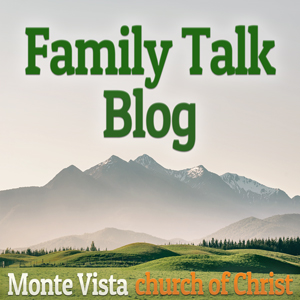Have you ever searched the scriptures to find the answer to a question or to refresh your mind of something you seem to remember? Or, have you studied to prove a point and therefore missed an important fact in the life of Christ or plan of salvation? Have you found truths in a later reading of the Bible that you had missed in previous reading or even after many years of study? Many of us who have read and studied for decades continue to find things that we never noticed or were aware of before. It may be a question asked by someone that causes a search for an answer. It may be just a sudden realization of a description or application of teaching that you had not noticed before. Or it might be understanding that something, which we thought was in the biblical text, is not there at all.
When someone asks, “Who witnessed Jesus rising alive from the niche where He was laid?” a search of scripture and first-century writings can find no answer to that question. The same applies to, “Who saw him remove the grave wrappings, fold and lay them aside?” And, “Who, of flesh and blood, saw Him come out of the tomb?” Although there is ample evidence that these events took place, there is no record that any human individual witnessed them. The only apparent human witness of life returning to the body of Jesus is Jesus Himself.
The resurrection witnesses did not see the resurrection, Jesus rising from the dead, but only the empty tomb’s results and the living Jesus. The witnesses only observed Jesus walking, talking, and consuming food. The record gives evidence that He appeared to many, beginning on that “third day” and continuing for almost seven weeks. Therefore, the testimonies presented in the Bible are of the post-resurrection appearances of Jesus. As such, Jesus is then the most important witness of the resurrection, by His appearances and offering of His body for inspection. The inspection proved both that He died but was now alive. Jesus is, in all things, “The faithful and true Witness” (Revelation 3:14).
One point often missed is that Jesus’ first testimony to the disciples of His resurrection was not verbal but nonverbal. It was not the stone rolled away from the door but what met them inside the tomb. Waiting for the disciples, on the place where He had lain were “the linen wrappings lying there, and the face-cloth which had been on His head, not lying with the linen wrappings, but rolled up in a place by itself” (John 20:5-8). For people that have been together, day and night, for three years, the habits of each would be well known. To see the wrappings and headcloth folded and laid aside, as though the sleeper has awoken and “made-the-bed” would be the same as Jesus saying to them, “I am alive!” He finally spoke the words to Mary Magdalene (John 20:15-17). The women went into the tomb, saw the angels, but paid no attention to the linens. Those items had meaning only for those who had lived, camped, and traveled with Jesus.
There are several distinct differences between the resurrection of Jesus and that of Lazarus a few days earlier (John 11:39-44). At Lazarus’ tomb, people had to remove the stone from the entrance. At Jesus’ tomb, an angel removed the stone (Matthew 28:2). Jesus called Lazarus to come forth, but Jesus commanded His own resurrection (John 10:18). Lazarus came out with grave wrappings still confining him. Jesus came out of His wrappings without help from people, leaving the wrappings behind. Lazarus was unwrapped and helped out of the tomb by people. Jesus was first seen by people as a fully-clothed man outside the tomb and, soon after that, walking on the road to Emmaus (Luke 24;13-35).
Some people will argue that the angels helped Jesus remove the grave wrappings. Others say that His body passed through them as He arose, citing that He appeared inside a closed and locked room (John 20:26). The Bible is silent about how the wrappings went from His body to the places where they were found. Neither are we told where His clothes came from that He wore when greeting Mary, the two disciples on the road, the eleven in the closed room, etc. These “curiosity items” are not necessary to the Gospel’s objective of causing us to believe that our savior died, was buried, arose from the grave, and resides in the domain of God’s throne.
There are many things that we, as curious human beings, would like to know. And there are many things that God has reserved for His personal knowledge that we do not need to know “The secret things belong to the LORD our God, but the things revealed belong to us and to our sons forever, that we may observe all the words of this law” (Deuteronomy 29:29). John reminds us that not everything about Jesus is revealed, but everything we need to know is written: “So that you may believe that Jesus is the Christ, the Son of God; and that believing you may have life in His name” (John 20:31). Are you filled with the eternal life that comes through faith and obedience?
